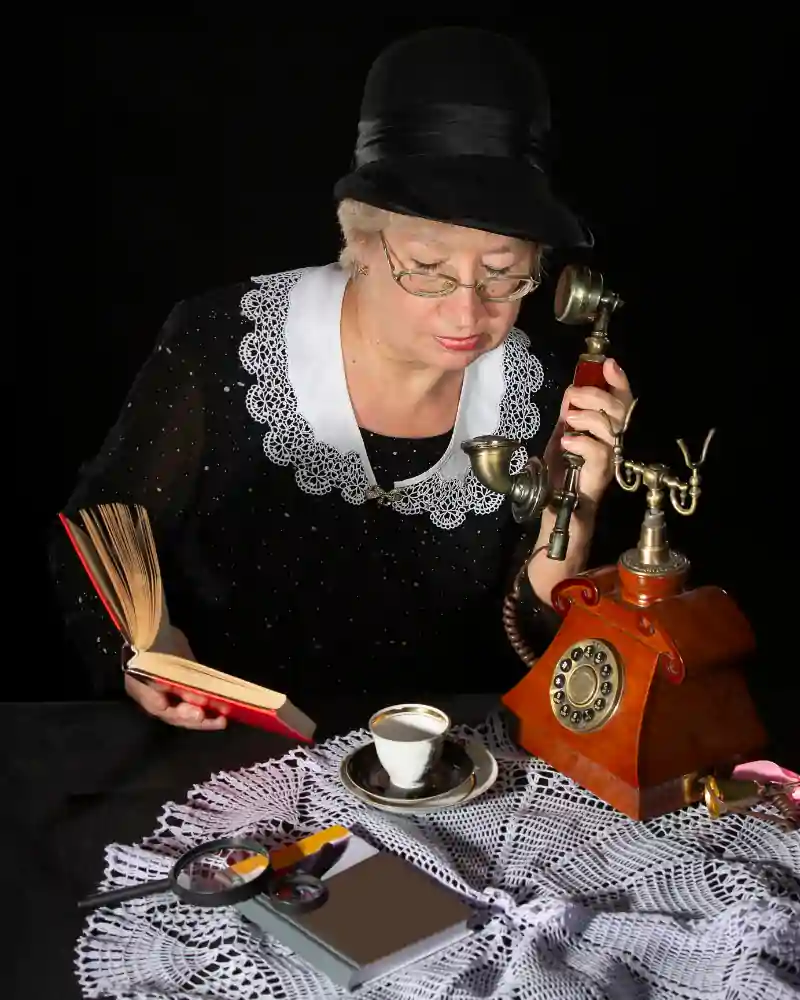Female judges in many jurisdictions wear lace collars as part of their judicial robes. These collars, also known as “jabots,” are a traditional part of judicial attire worn by male and female judges in some courts. The lace collar is typically worn over the robe and is attached to the neckband of the robe with a pin.
The origins of the lace collar are unclear, but it is thought to have evolved from the ruffs and lace collars that were popular during the Elizabethan era. In the past, judges and other legal professionals often wore elaborate and ornate clothing to symbolize their status and authority. Today, the lace collar is still worn by many judges as a symbol of the dignity and respect associated with the judicial profession.
The possible reasons why do female judges wear lace collars
Tradition
Tradition is an important reason why female judges may wear lace collars. The use of judicial robes, including lace collars, has a long history dating back to ancient civilizations. In many jurisdictions, wearing judicial robes is a tradition that is still observed today to signify the legal profession’s importance and solemnity.
For female judges, the lace collar is often seen as a symbol of their status and authority as judiciary members. Wearing a lace collar is a way for female judges to show respect for the tradition and history of the legal profession and to demonstrate their commitment to upholding the law.
In some jurisdictions, wearing judicial robes is required by law; in others, it is a matter of custom and tradition. Regardless of the specific reason for wearing them, judicial robes, including lace collars, are an important part of the legal profession. They are often seen as a symbol of the dignity and respect associated with being a judge.
Symbolism
Symbolism is another important reason why female judges may wear lace collars. The lace collar symbolizes the dignity and respect associated with the judicial profession. It is often seen as a way for female judges to demonstrate their commitment to upholding the law.
In many jurisdictions, the judicial robe and lace collar are seen as a symbol of the authority and impartiality of the judiciary. Wearing a lace collar is a way for female judges to show respect for the legal profession and convey a sense of professionalism and authority.
The lace collar is also a symbol of the formality and solemnity of the courtroom. By wearing a lace collar, female judges can create a sense of dignity and respect in the courtroom, which helps to establish a sense of order and decorum.
Overall, the lace collar is an important part of the judicial attire of many female judges and symbolizes the dignity, respect, and authority associated with the legal profession.
Professionalism
Professionalism is another reason why female judges may wear lace collars. As members of the legal profession, judges are expected to adhere to high standards of professionalism and integrity. Wearing a lace collar is one way for female judges to demonstrate their commitment to these standards and convey professionalism and authority.
The lace collar is often seen as a symbol of the dignity and respect associated with the judicial profession and is a way for female judges to show respect for the legal system and the rule of law. By wearing a lace collar, female judges can convey a sense of professionalism and dedication to their role as arbiters of the law.
In addition to conveying a sense of professionalism, the lace collar is also a way for female judges to demonstrate their commitment to upholding the law and to ensuring that justice is served. By wearing a lace collar, female judges can show that they take their responsibilities seriously and are dedicated to upholding the principles of the legal system.

Formality
Formality is another reason why female judges may wear lace collars. The lace collar is often worn as part of formal judicial robes, which helps to create a sense of formality and solemnity in the courtroom.
In many jurisdictions, the judicial robe and lace collar are seen as a symbol of the authority and impartiality of the judiciary. Wearing a lace collar is a way for female judges to convey a sense of formality and to show respect for the legal profession and the rule of law.
The formality of the lace collar is also a way for female judges to create a sense of order and decorum in the courtroom. By wearing a lace collar, female judges can establish a professional and respectful environment in the courtroom, which helps ensure that proceedings are conducted fairly and orderly.
Overall, the lace collar is an important part of the judicial attire of many female judges and symbolizes the formality, dignity, and respect associated with the legal profession.
Uniformity
Uniformity is another reason why female judges may wear lace collars. In many jurisdictions, the judicial robe and lace collar are part of a uniform dress code that judges and other legal professionals follow. Wearing a lace collar is a way for female judges to conform to this dress code and to show solidarity with other members of the legal profession.
The uniformity of judicial attire, including the lace collar, is often seen as a way to demonstrate the impartiality and neutrality of the judiciary. By wearing a uniform, female judges can convey that personal preferences or biases do not influence them and that they are committed to upholding the principles of the legal system.
In addition to conveying a sense of impartiality, the uniformity of judicial attire is also a way for female judges to show respect for the legal profession and the rule of law. By wearing a lace collar as part of their judicial robes, female judges can demonstrate their commitment to upholding the legal system’s principles and serving the interests of justice.
Summary
In some courts, lace collars are a traditional part of judicial attire worn by male and female judges. The lace collar is typically worn over the robe and is attached to the neckband of the robe with a pin.
There are several reasons why female judges may wear lace collars, including tradition, symbolism, professionalism, formality, and uniformity. The lace collar is often seen as a symbol of the dignity and respect associated with the judicial profession. It is a way for female judges to demonstrate their commitment to upholding the law and conveying a sense of professionalism and authority.
In addition, the lace collar allows female judges to create a sense of formality and solemnity in the courtroom and to conform to a uniform dress code.
FAQ
Why does Judge Judy wear a lace collar?
Judge Judy wears a lace collar in the courtroom to add a bit of color to her black robes and to be disarming to litigants. She began wearing the lace collar as soon as she was appointed as a judge, as she noticed that male judges wore stiff-collared white dress shirts and colorful neckties that peeped out of the top of their robes, while female judges had nothing but neck peeping out of their robes.
Do judges wear anything under their robes?
Judges wear formal clothes such as button-up shirts with neckties, blouses, and slacks under their robes. Male judges usually wear white shirts with neckties, while female judges may wear blouses.
What is a Bertha collar?
A Bertha collar is a wide, flat, soft, round, or semicircular collar on the shoulders from the neck to the décolleté. It is typically made of lace or another thin fabric and covers the low neckline of a dress. The term “Bertha” comes from the name of a character in a novel by Elizabeth Gaskell.
Does the color of a judges robe mean anything?
The color of a judge’s robe can have different meanings depending on the country and the type of court. In England, judges used to wear robes in three standard colors: violet for the summer, green for the winter, and scarlet for special occasions. In Germany, the color of the robe depends on the profession, with judges of ordinary courts wearing purple, state prosecutors wearing red, and attorneys wearing blue. In the United States, judges typically wear black robes, which have become a symbol of impartiality and seriousness.
Do judges buy their own robes?
Sometimes, the court orders the robes for the judges, and they do not get to choose. In other cases, judges may purchase their robes with private funds. In the United States, judges typically wear black robes, usually ordered by the court or purchased from a factory.



